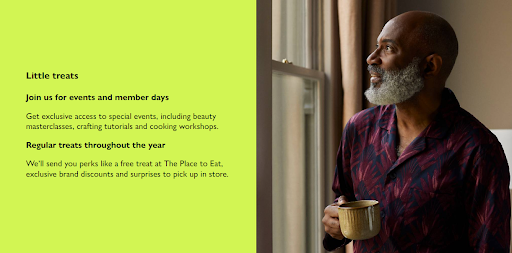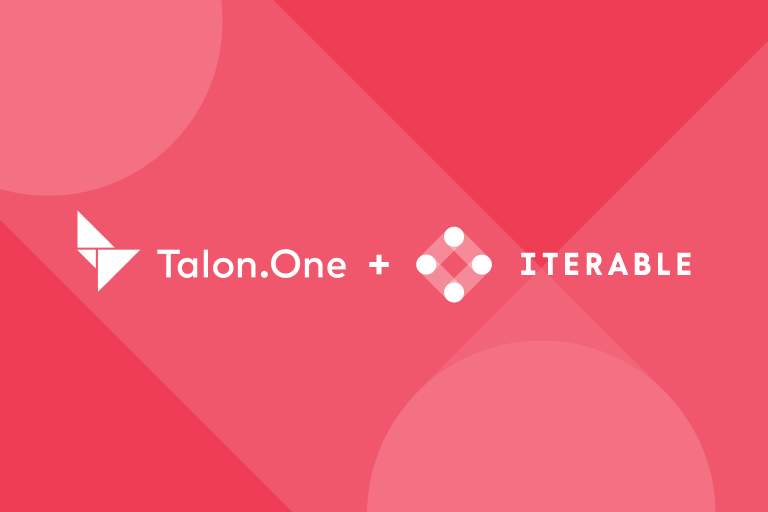Founded in 2015, Talon.One is a flexible, enterprise-grade loyalty and promotion solution with a mission to streamline the process for brands to run and scale their incentive campaigns.
With a focus on automation and ease-of-use, the Talon.One platform allows you to click together simple rules to build rich promotional campaigns at scale, across both in-store and online channels. Clients include global brands such as Adidas, Live Nation, Carlsberg, and Eddie Bauer.
At his previous company, Lieferando, founder Christoph Gerber discovered a gap between marketing and development teams when it came to agilely running promotions across different channels—and he wanted to fix it. That’s why Talon.One was born: to bridge the gap between ideas and effort—enabling flexible, headless loyalty and promotions without code.
As retailers modernize their engagement strategies to meet increasing customer expectations, the need for flexible, future-proof loyalty programs has never been more important. According to Forrester’s Loyalty Technology report, 53% of B2C marketing decision-makers are looking to increase their investment in loyalty technology. This means that a loyalty program now contributes to the overall retail experience as much as a brand’s website and physical stores.
However, not all loyalty programs are created equal—with many designed for users to simply earn and burn points without building any emotional connection. As loyalty technology becomes more advanced and consumers’ shopping behavior more nuanced, retailers need to carefully design and implement their programs to maximize their effectiveness. The following takeaways will help you create an advanced retail loyalty program that aligns with both your customers’ journeys and your business goals, and ultimately increases conversions.
1. Define SMART Goals
By defining specific, measurable, achievable, relevant, and time-bound (SMART) objectives for your loyalty program, you can accurately gauge progress and measure success. To run a well-structured loyalty program, you need to develop a comprehensive plan that addresses a wide range of topics, including:
- How users will earn and redeem rewards
- How to engage and communicate with customers
- How to promote and market your program
Additionally, identifying key performance indicators (KPIs) that are most relevant to your business is crucial. These KPIs may include metrics such as program enrollment, customer retention, and sales generated through the program.
2. Deliver Relevant, Exclusive Rewards
A loyalty program’s success hinges on the rewards it offers to members, which acts as motivation to both join the program and continue spending with a brand. This demand for exclusive benefits is evident in a recent U.S. customer loyalty survey, which revealed that 87% of Gen Z respondents expressed their intention to join more premium loyalty programs.
Offering exclusive rewards doesn’t mean you have to rely heavily on financial benefits such as discounts and cash back. The key is to mix your monetary offers with non-financial rewards that are focused on creating a memorable experience for members. These rewards include:
- Early access to the best deals
- Member exclusive bundles
- Member workshops and tutorials
- Exclusive invites to premium events


British retailer John Lewis runs a loyalty program enabling members to enjoy exclusive offers such as crafting tutorials and cooking workshops.
3. Make the Program User-Friendly
A complex loyalty program can lead to customer frustration, confusion, and reduced engagement.
Right from the start, prioritize removing any friction from the sign-up process for your loyalty program. Provide clear steps for users to join, whether by email address or phone number, and offer users the option to decide how often they want to receive promotional emails from your brand.
Ease of redemption is equally important. Ensure a simple and straightforward process for customers to check their points balance and redeem points at checkout—whether in-store, on your website, or through your mobile app. And, with many loyalty programs now offering multiple tiers, retailers need to make a conscious effort to clearly communicate the benefits and upgrades available at each stage to further drive program adoption.
4. Use Customer Data to Personalize Rewards
Loyalty programs serve as a powerful solution for retailers to gather customer data including demographic information, transaction history, product preferences, and engagement metrics. This first-party data not only has higher reliability and accuracy but also enables brands to personalize their marketing efforts on a more granular level.
Unlike third-party cookies that track users across different websites, cookieless loyalty data offers retailers the ability to design personalized promotions that deeply resonate with individual customers. This, in turn, elevates the overall customer experience and cultivates long-lasting loyalty.
Building your customer data strategy goes hand in hand with a robust data privacy and security policy. If you plan to partner with a loyalty software provider to implement your program, choose a vendor that allows you to gain a clear view of how your project is managed and has meticulous security measures in place to prevent data breaches. These measures include access control, data encryption processes, and thorough incident response plans.
5. Create a Cross-Channel Experience
As customers increasingly seek seamless experiences, many retailers have already adopted a cross-channel, or omnichannel, approach. The rise of various cross-channel innovations, such as buy online, pick up in-store (BOPIS), buy online, return in-store (BORIS), and endless aisle, has effectively bridged the gap between online and physical shopping.
Your loyalty program is a valuable asset for your overall cross-channel retail strategy. A cross-channel loyalty program gives you the freedom to run any loyalty campaign across your channels without causing any disruption to your customers’ shopping journey. Your customers can easily redeem their points, make use of their digital wallets or use vouchers and coupons across your physical and online environments.
6. Show Progress Toward Rewards
To boost engagement with your brand, your loyalty program should offer incentives or rewards that become more valuable as customers get closer to achieving a goal. As customers near the next tier or benefit, they tend to increase their activity. This is often referred to as ‘tier sprints’ and ‘point sprints.’
Using a visual progress tracker in your app motivates members to increase their engagement and achieve higher tiers by showing how far they have come and how far they have to go to redeem their points or gain a reward. Clothing brand, H&M, for example, employs a visual progress tracker to incentivize its loyalty program members to accumulate points and unlock new benefits.


H&M uses a point tracker to let users know how close they are to the next tier. Source: H&M.
Final Thoughts
Retail loyalty programs are a great way to enhance the retail experience, but they must be customer-centric in design. The most effective loyalty programs deliver a seamless, cross-channel experience to members, offering rewards and perks that create a sense of exclusivity. These programs can serve as a valuable means for retailers to collect first-party data and tailor their offerings to meet the genuine needs of their customers.
Learn more about how the Iterable + Talon.One’s integration empowers you set up powerful promotional and loyalty marketing campaigns.

































